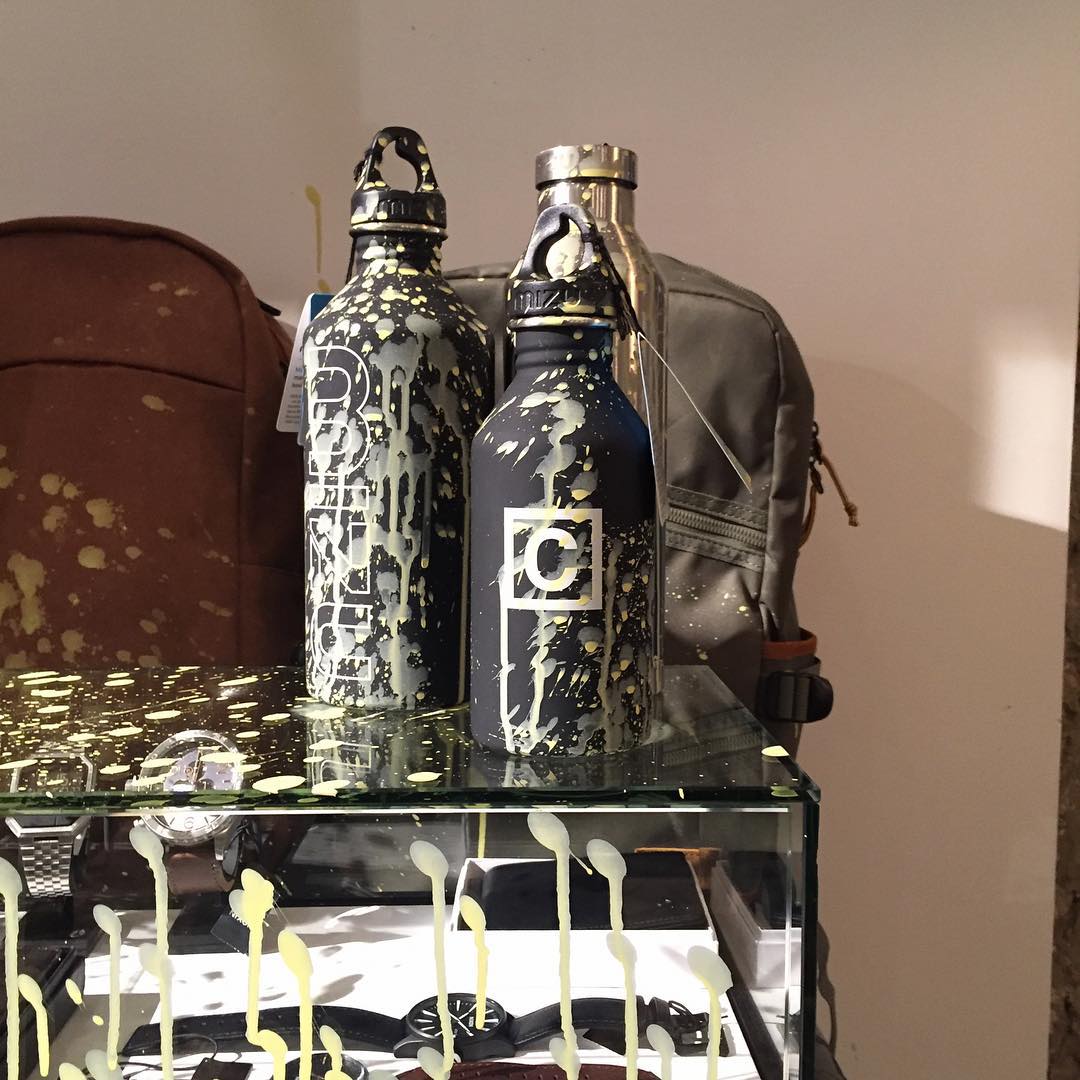From The Cannon Street Bellows
As rising housing prices push more of us into difficult situations here in Hamilton, it can be hard to find inspiration for how to fight back against gentrification. But just down the 401, anarchists in Montreal have been developing a practice of direct action against businesses involved in gentrifying their neighbourhoods over the past several years. Focused on Hochelaga in the east and Saint-Henri in the south-west, a variety of strategies have emerged that share a common goal of making the territory inhospitable for businesses that try to attract a rich clientele to working-class areas.
Starting in 2010, there have been a steady stream of attacks against surveillance cameras. By destroying the cameras, anarchists challenge the logic of surveillance – who does it actually make safer – and also make it easier to attack other targets in the neighbourhood. The early attacks in Montreal used a fire extinguisher filled with paint and a communique that circulated in December 2016 showed a masked up person wearing a string of destroyed cameras as a necklace.
In Saint-Henri in May 2015, the grand opening of a juice bar was interrupted by a masked crowd that threw a smoke bomb into the venue and then attacked the owner with pepper spray when he attempted to intervene. This tactic of mass, open attacks against prominent gentrifiers shows clearly that the rich are vulnerable and the police can’t stop a determined group from attacking them. Still in Saint-Henri, in May 2016, a de-gentrification action collectively pillaged a fancy food store in the area and redistributed the food to local residents. Back in Hochelaga, a march on Halloween 2016 distributed candy to people in the neighbourhood, while also painting dozens of tags against gentrification and the police, who, when they arrived, were driven back with rocks. Mass resistance breaks the spell of peaceful acceptance of development and gentrification, and helps us shake off the fatalism and despair that they inflict on us.
There have been some attempts at similar actions in Hamilton: last June, a group of about thirty people confronted a tour of real estate investors called Try Hamilton. Using chants and a barrage of gross stuff, they showed that there will always be resistance to those who try to get rich by pushing people from their homes. Their commitment to self-defense against the police meant that, like in the Montreal actions above, no one was arrested.
There have also been a large number of clandestine attacks against high-end and pro-gentrification businesses in Saint-Henri and Hochelaga. These actions have featured many broken windows and much graffiti, with a preferred tactic being the use of paint-filled fire extinguishers. In November 2016, a communique circulated calling to go beyond attacking the exterior of these shops: the windows of three stores in Hochelaga were broken and then a fire extinguisher was used to coat the interior with paint. The communique read, “By destroying these windows and ruining this merchandise with paint, we engage in an act of war. We will not let these boutiques install themselves here peacefully. This facade of peace is nothing more than an attempt to make invisible the war in progress against poor and marginalized people.” A similar action against a clothing store in Saint-Henri in 2015 was claimed as part of Black December, a call by international anarchist prisoners to attack symbols of domination that was also answered in Hamilton by graffiti on the Barton Jail.
Throughout, there has also been a consistent effort to publicize anti-gentrification actions and circulate counter-narratives about development. Following a June 2015 attack on a restaurant in Hochelaga that is themed around macho imagery, a poster circulated queering and parodying the restaurant’s logo and explaining why expensive restaurants are not welcome in the area. In December 2016, a poster went up in Saint-Henri about local historical figure Louis Cyr, whose image has been commercialized by an expensive restaurant in the neighbourhood that had been attacked several times in the preceding two years. Parasitic entrepreneurs will try to commodify aspects of local culture and history in advertising campaigns to sell the neighbourhood to outsiders. What does this look like? Think all the discourse about steel or industry by gentrifiers in Hamilton, like the Cotton Factory or Seed Works. These redeveloped industrial spaces brand themselves using elements of local labour and popular culture to attract yuppy offices and events.
This is only a small sample of the actions that have occurred, but they show that with determination, we can find the means to resist. Although it can seem hopeless,, in an interview with Submedia in December 2016, two anarchists who participated in some of the above Montreal actions said:
“[Gentrification] can seem inevitable, and maybe it is, but it’s still worth the effort to struggle against it and not just roll over. In the unbearable world we live in, I feel that my life can find a sort of meaning if I fight back.”
For more information about actions in Montreal: Montreal Counter-information
Want to know more about what gentrification is and it’s history in Hamilton? Check out the text “Now that it’s Undeniable: Gentrification in Hamilton”.





